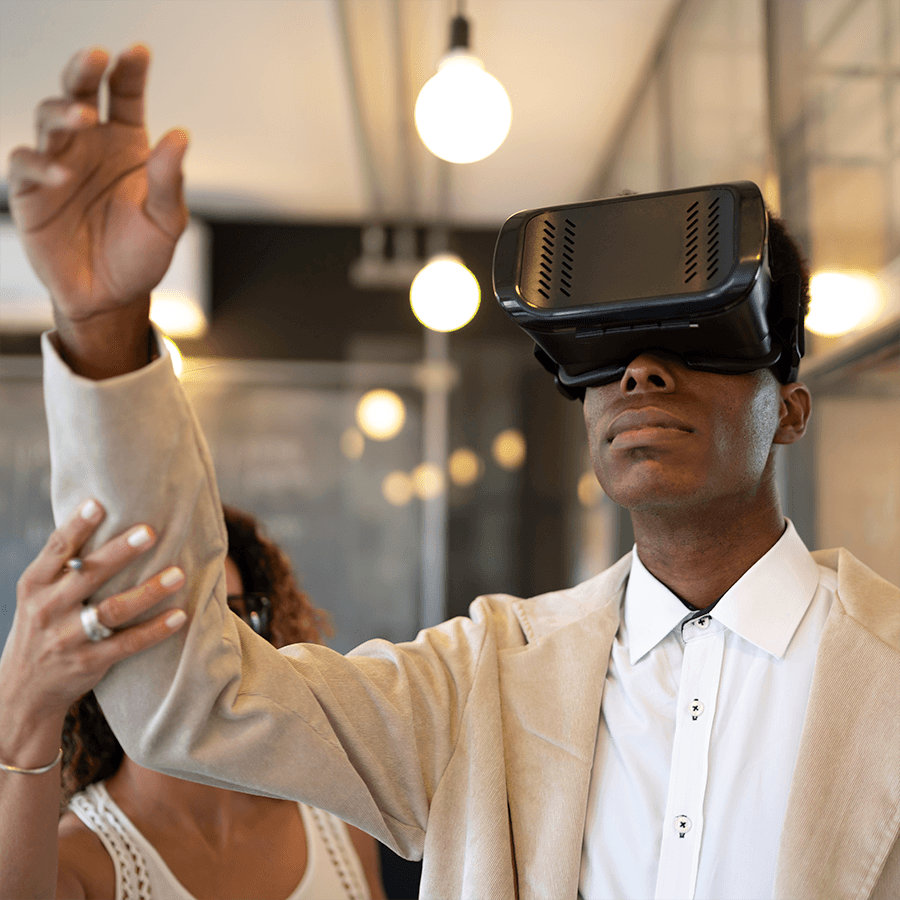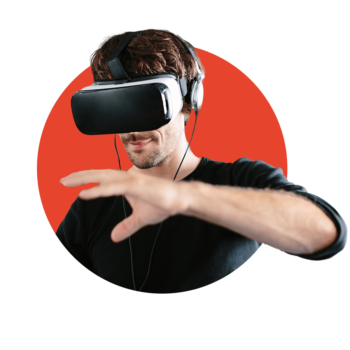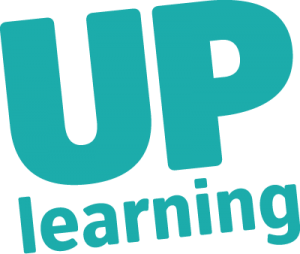What is the added value of virtual reality (VR) in terms of investigating officers’ learning activities? UP learning went to work on this question posed by a government agency. Read the insights gained from this journey of discovery here.
Journey of discovery for investigating officers
Virtual reality (VR) is a promising newcomer in the field of learning methods. A government agency asked UP to be its tour guide in exploring its added value. Not on an all-inclusive luxury holiday, but in an opportunity to get your hands dirty and feel the sweat on your brow. The goal was to discover VR in all its forms and experience for themselves what developing VR means in terms of time, expertise, money and technical resources.
“We discovered that virtual reality opens up new doors. Because we now have experience with house searches, we know what works and what doesn’t.”
How it went
We divided the journey of discovery into different phases. While this gave us direction, we did not yet have a complete picture of the final destination. We avoided the conventional routes and forced ourselves to explore uncharted territories.
Our starting point was UP’s outline of the current state of affairs and future prospects for virtual reality. We discussed the potential applications in a brainstorming session. And we arrived at a combined choice for a case. We also chose to deliver a ‘minimal viable product’ for investigating officers. We worked with stakeholders in a series of boot camps to develop the ‘MVP’. Finally, we evaluated whether the initial question had been answered.
House search as the final destination
The end result of the journey is a 360° interactive video in which investigators independently conduct a house search. The training starts with an introduction in the briefing room. Here, you learn how interactions in VR work and what is expected of you during a house search. After you get used to VR, the real work begins: the house search. First, you are confronted at the door by an angry resident who does not want to let you in. What do you do? If you manage to respond in the right way, she allows you to enter. Once inside, you are asked to search the kitchen and living room. What should you be looking out for? Can you find the hot spots? And what do you do if you find something suspicious?

What we discovered
In this journey of discovery, the power of VR training for house searches proved to be:
- Learning how to deal with emotions
It is quite intimidating when an angry resident of a property under suspicion is shouting right into your face just like in real life. This effect is many times greater with 360° interactive video than with the same image on a flat screen. It is comparable to working with ‘live’ actors. One added benefit is that you can pause the video for immediate feedback without interrupting the immersion experience. In fact, ‘live’ actors lose some of their credibility when you pause for feedback during an in-person training session. - Can be completed independently
You can complete a VR training course independently at any time it suits you. You are therefore not dependent on the schedules of actors or a specific practice location. - It is good preparation
Because you practice as if you were ‘in the real world’ you are well prepared for the actual situation or the next stage of training. Since you have already experienced a practical situation, it is easier to apply the theory. Moreover, you are also better able to remember what you have learned. - Immersing yourself spatially
Searching the house itself is also done via a 360° interactive video. This allows the investigator to remain in the same environment from the time the ‘doorbell rings’ onwards, proceeding in steps toward the next scene. But because interaction via video is limited and you are not able to pick up everything you see, for example, the house search does feel less natural as compared to a VR world that you can ‘walk’ through. This is because you can open cupboards, confiscate weapons or money, etc. - Actors, locations and training in the same way
Other advantages of training via VR include that you do not have to hire actors, set up physical locations or ensure that instructors are present in-person every time. Moreover, you can ensure that everyone is trained in the same way, making it easy to compare their development.
Conclusion: choose your learning goal carefully
As with any form of training, establishing the learning goal is the most important step. Do this carefully. In this case, there are two learning objectives that, in an ideal situation, would require two different learning tools:
- Investigating officers must learn how to keep an emotional situation under control. For dealing with emotional situations, such as in the case of the angry resident, the 360° interactive video is most suitable.
- Investigating officers must learn to search according to protocol. VR is best suited for this learning goal, because you can move through space in a natural way. To learn how to search, you need to be completely free to look around the room, open cupboards and pick up anything in that space.
These learning objectives require a different approach (360° interactive video versus VR). If you combine these two learning objectives in a single training course, it can quickly become complex. It is then difficult to determine when you have achieved all of the learning objectives. In this case: dealing with emotions and searching according to protocol.
Tip
For each learning objective, consider which learning tool is most suitable. Often, a learning goal can be achieved in a number of ways, but one learning tool will generally be more effective than another.




